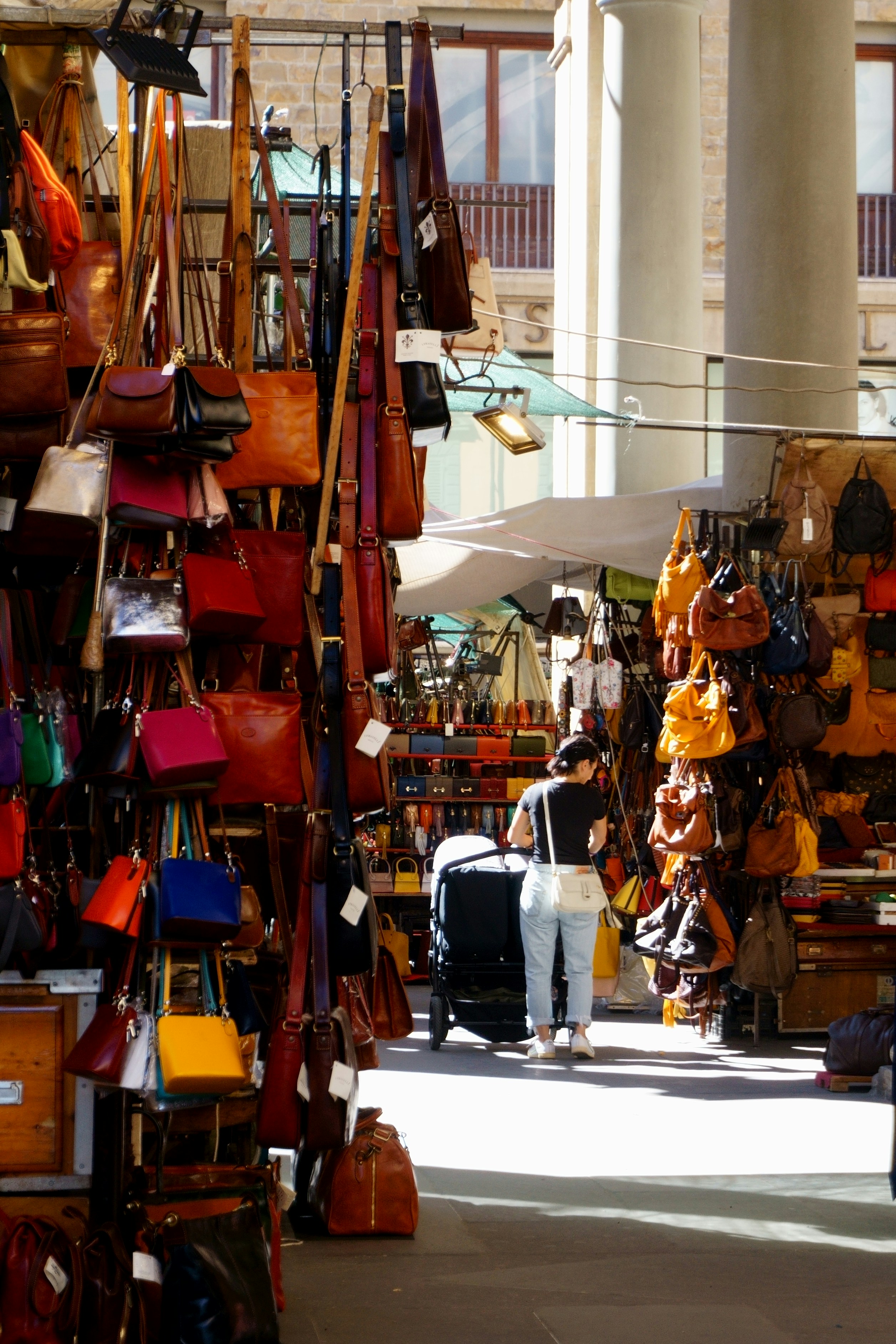La Peninsula
La Peninsula

Italy’s artisanal leather tradition is more than fashion; it forms part of its identity. It is the creases, colours, textures, and slow rhythms of craftsmanship that have made “Made in Italy” labels a standard of enduring beauty. Products can only be labeled “Made in Italy” if they are 100% produced, sourced, and manufactured in the country, according to Institute for the Protection of Italian Producers (ITPI).
Today, this heritage is constantly under siege. Across marketplaces, tourist stalls, and global supply chains, counterfeit leather goods are eroding the value of genuine artistry, undermining consumer trust, and casting doubt on the “Made in Italy” label when a consumer sees it.
It’s no secret that “Made in Italy” or “Vere Pelle” labels are all over leather markets in Rome, Florence, Milan, Siena, and other major tourist cities across the peninsula. Sold at lower prices, these “Italian leather goods” negatively impact historic pelleterie, who have painstakingly designed, produced, and manufactured authentic leather products for generations. Fake leather disguised with the coveted “Made in Italy” label not only lower prices and damage Italy’s leather craftsmanship heritage, but it also misleads customers from around the world who believe they’re returning from Italy with something timeless, only for it to quickly deteriorate.
Counterfeiters have developed many strategies to skirt protections and mislead consumers:
Fortunately, real artisans have not remained passive. Their responses are multifaceted and increasingly robust, with reputable groups like the Consorzio Vera Pelle Italiana Conciata al Vegetale issuing guarantee marks, such as Pelle Conciata al Vegetale in Toscana, which include serial numbers, QR codes, or holographic tags that trace origin and production method.
Prime Minister Giorgia Meloni has spearheaded the attack on fakes. In August 2025, speaking at an economic conference in the Marche region, Meloni said, “It is impossible, no matter how hard they try, to copy a Made in Italy product because it lacks the Italian identity.” Earlier, in April 2023, at the Salone del Mobile furniture show in Milan, Meloni announced the beginning pillars of what would become the Made in Italy Framework Law, codified later in January 2024. From home goods to apparel and accessories, the law defines three pillars: “a relentless fight against counterfeiting and unfair competition, financial instruments to grow SMEs in sectors of (Italian) excellence, and training and (the development of) skills.”
“This brand is the most precious thing we have, provided that we can defend it and enhance it,” added Meloni.
Also, in 2023, the Guardia di Finanza seized over 37,000 plastic products falsely sold as genuine leather.
The Ministry of Education and Merit offers the specialized Made in Italy High School, a vocational education that promotes supply-chain integrity and provides skills for business management, marketing strategies, and entrepreneurship. Combined with courses in the economic and legal sciences, alongside STEM research, the school prepares students for both real world business and basic education. Today, Scuola del Cuoio, established in 1945 to equip World War II orphans with structure and career opportunities, contributes to Italy’s continuing dedication to craftsmanship and business management education for each generation.
There’s an unmistakable difference between true Italian leather and its synthetic imitators, a difference you can feel, smell, and see over time. Authentic Italian leather carries a rich, earthy scent, warm and organic, evoking the natural world it came from. Fakes, by contrast, often betray themselves with the sharp tang of chemicals, plastic, or even no scent at all.
Run your hand over the surface and the truth reveals itself further. Real Italian leather feels soft yet substantial, its grain alive with tiny variations, scars, and natural irregularities that speak of individuality. Synthetic substitutes often aim for perfection and achieve only sterility, uniform, stiff, or slick textures that feel artificial to the touch.
True leather wears its imperfections with pride. Minor flaws and uneven patterns are part of its charm, a mark of authenticity. Counterfeits, on the other hand, mimic flawlessness: a glossy, mirror-like surface that repeats too perfectly to be real. Even the smallest details tell the story. The hardware on Italian craftsmanship, buckles, zippers, clasps, feels weighty, deliberate, engineered for longevity. By contrast, imitation pieces rely on flimsy metal or plated plastic that tarnishes or breaks with time.
Then there’s the matter of water: a small test, but telling. A single drop on genuine leather will slowly darken the surface as it’s absorbed, while synthetics simply repel moisture, leaving no trace. Of course, quality commands its price. Authentic Italian leather goods are never “bargains”; they reflect skilled labor, responsible sourcing, and centuries-old techniques. Counterfeits lure with impossibly low prices and glossy promises that fade fast.
Over time, the difference becomes art. True leather develops a patina, softening, deepening in tone, tracing the life of its owner. Fakes decay instead: cracking, peeling, or flaking as their synthetic layers fail.
And finally, the label tells the tale. Look for “Vera Pelle” or certifications like Pelle Conciata al Vegetale in Toscana, often accompanied by serial numbers, QR codes, or anti-counterfeit tags. Beware vague claims, “genuine leather” without proof, or even forged labels masquerading as the real thing. When you walk out of a real artisan’s shop, such as the Pelletteria Artigiana Viviani, stroll past the leather markets. New leather bag in hand, you’ll know just by a single glance that you’re in on the secret.
In a world full of greenwashing buzzwords (“sustainable,” “eco-friendly,” “vegan,”), the discerning consumer asks: what truly lies beneath the tag? Genuine Italian leather is never perfect. It carries irregularities, it smells of earth, it flows with time and movement. Fakes may flash their shine, but they cannot replicate their soul.
With Meloni’s recent declarations and the legislative moves underway, the dialogue around authenticity has sharpened. Buyers so inclined should look for provenance, for markers, for craftsmanship. Only then will “Made in Italy” continue to mean more than a label; it remains a promise.



